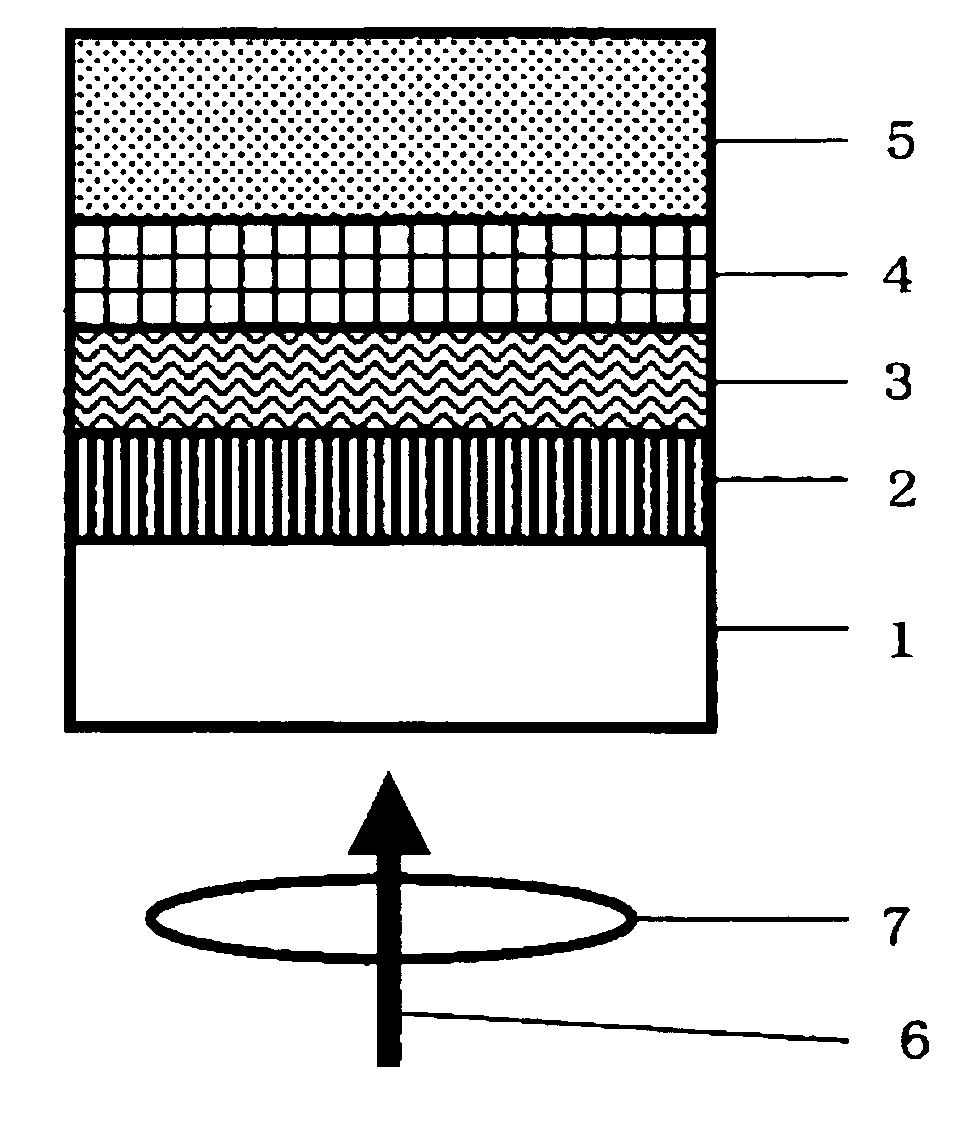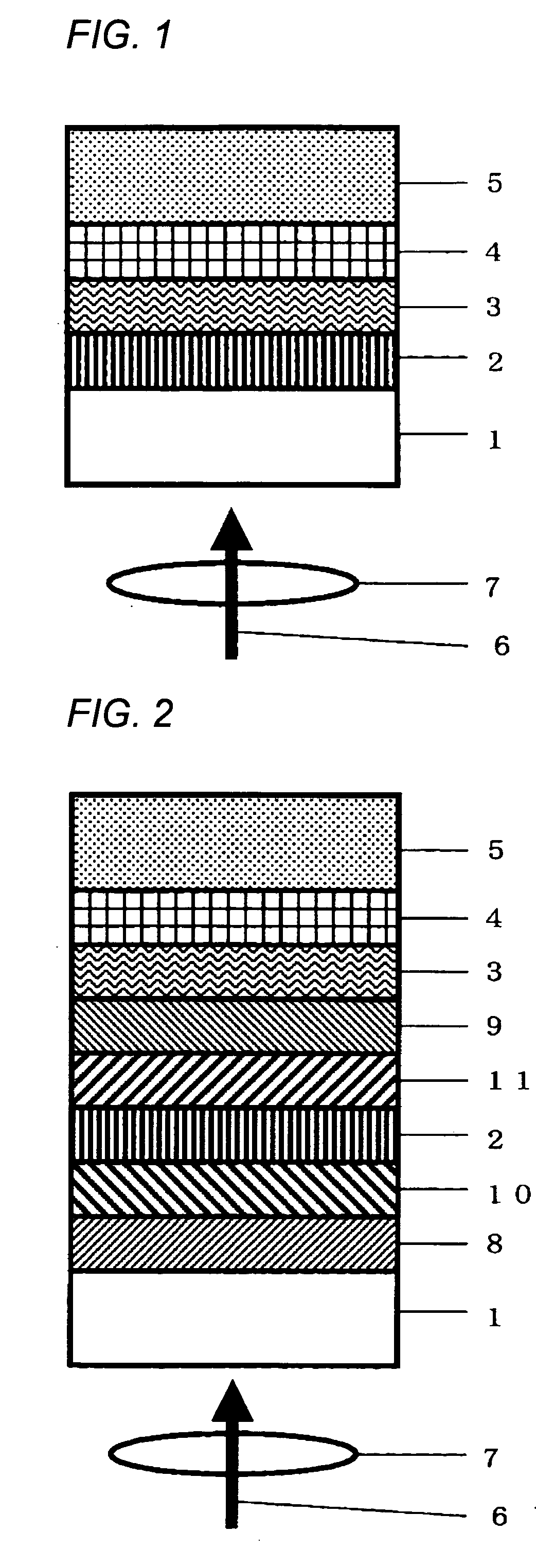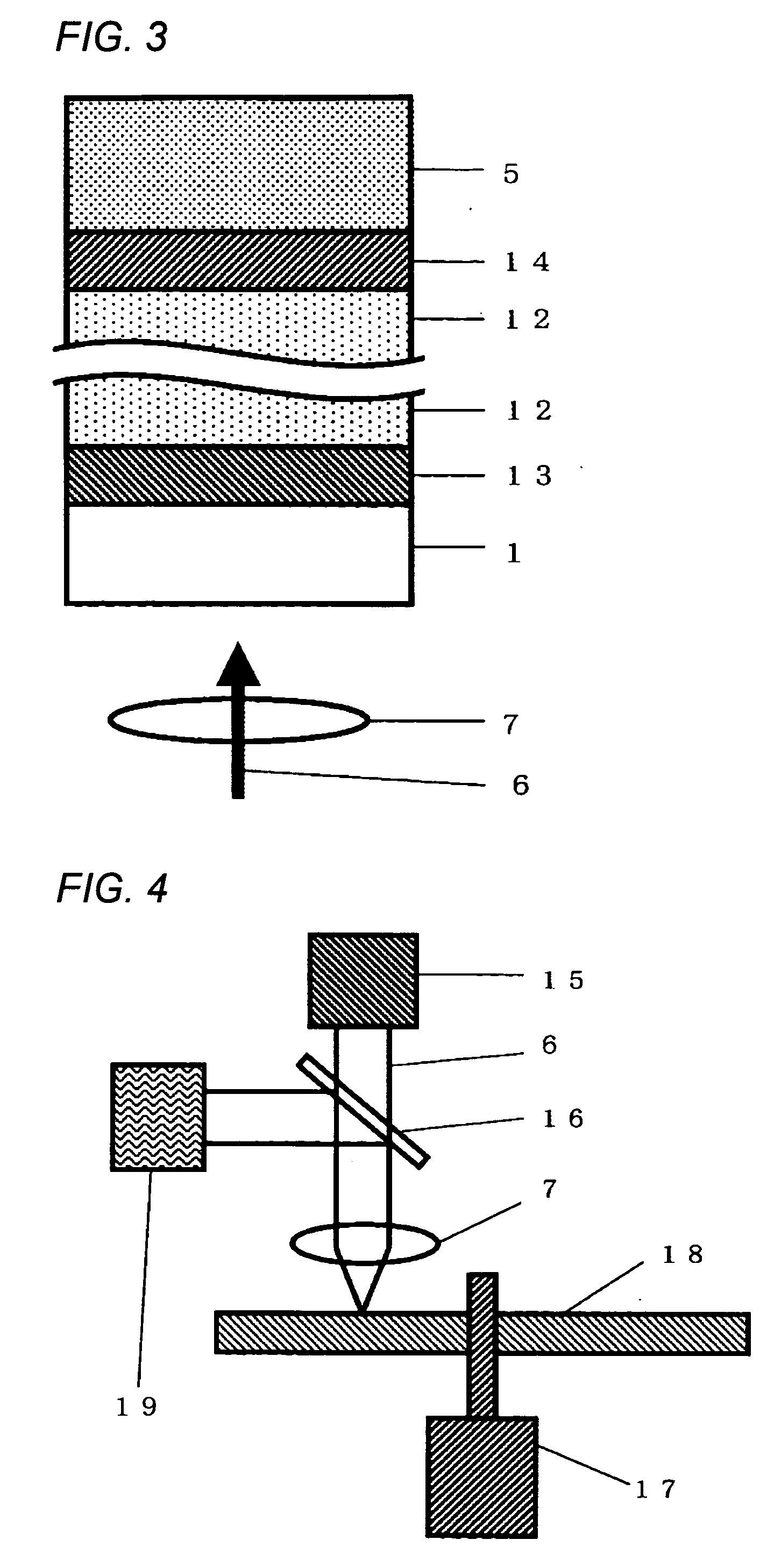Optical information recording medium and method for manufacturing the same
- Summary
- Abstract
- Description
- Claims
- Application Information
AI Technical Summary
Benefits of technology
Problems solved by technology
Method used
Image
Examples
first embodiment
[0062] Embodiments of the present invention will now be described in specific terms through reference to the drawings.
[0063] FIGS. 1 to 3 are partial cross-sectional diagrams of examples of the structure of the optical information recording medium of the present invention.
[0064] As shown in FIG. 1, in a optical information recording medium of the present invention, at least a recording layer 2, an optical absorption layer 3, a reflective layer 4, and a protective layer 5 are provided in that order on a transparent substrate 1. Recording and reproduction are performed with this optical information recording medium by converging laser light 6 with an objective lens 7 and irradiating the medium from the transparent substrate 1 side.
[0065] As shown in FIG. 2, a lower dielectric layer 8 may be provided between the transparent substrate 1 and the recording layer 2, an upper dielectric layer 9 may be provided between the recording layer 2 and the optical absorption layer 3, a lower inte...
example 1
[0089] A piece of polycarbonate resin, with a diameter of 12 cm, a thickness of 0.6 mm, a groove pitch of 1.23 μm, and a groove depth of approximately 55 nm was readied as a transparent substrate. A lower dielectric layer with a thickness of 120 nm and composed of (ZnS)80(SiO2)20, a lower interface layer with a thickness of 5 nm and composed of (ZrO2)46(Y2O3)4(Cr2O3O)50, a recording layer with a thickness of 8.5 nm and composed of Ge40Sb4Bi4Te52, an upper interface layer with a thickness of 5 nm and composed of (ZrO2)46(Y2O3)4(Cr2O3O)50, an upper dielectric layer with a thickness of 40 nm and composed of (ZnS)80(SiO2)20, an optical absorption layer with a thickness of 30 nm and composed of CrSi2, and a reflective layer with a thickness of 100 nm and composed of Ag98In2 were provided in that order on the surface of this transparent substrate where the grooves were formed, with these layers being formed by sputtering in an argon atmosphere. A protective substrate composed of polycarbo...
PUM
 Login to View More
Login to View More Abstract
Description
Claims
Application Information
 Login to View More
Login to View More - R&D
- Intellectual Property
- Life Sciences
- Materials
- Tech Scout
- Unparalleled Data Quality
- Higher Quality Content
- 60% Fewer Hallucinations
Browse by: Latest US Patents, China's latest patents, Technical Efficacy Thesaurus, Application Domain, Technology Topic, Popular Technical Reports.
© 2025 PatSnap. All rights reserved.Legal|Privacy policy|Modern Slavery Act Transparency Statement|Sitemap|About US| Contact US: help@patsnap.com



